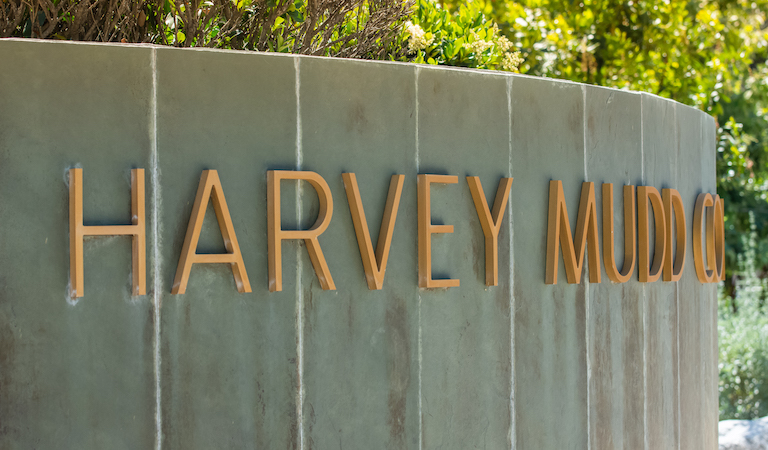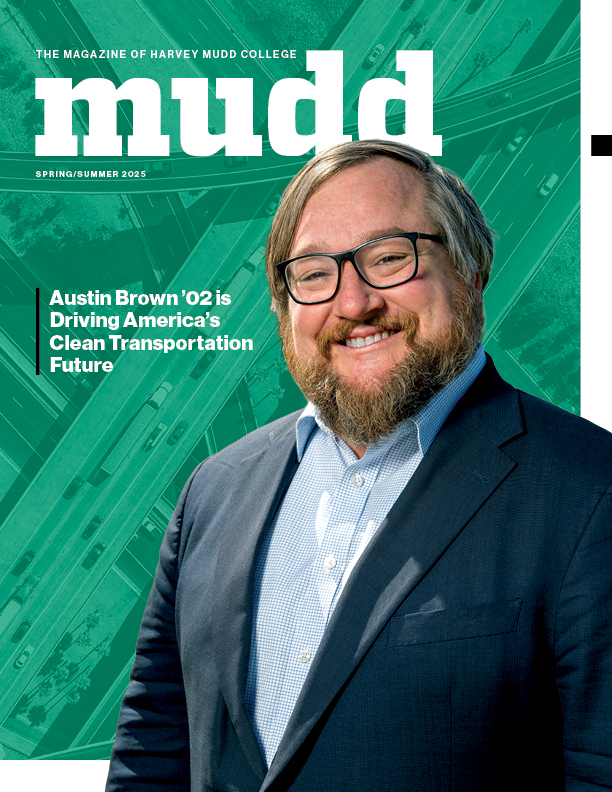NSF CAREER Award Supports Biophotonics Research
March 9, 2023
Harvey Mudd College engineering professor Josh Brake has received a National Science Foundation (NSF) CAREER award for his project “Next-generation Rhizosphere Monitoring – Non-invasive Plant Phenotyping and Health Monitoring Using the Light-piping Properties of Plant Stems.” NSF grants are the largest share of external support for faculty research at Harvey Mudd College.
Brake’s research interests are in biophotonics, a field at the intersection of optics and biology that is increasingly playing a role in biomedical diagnostics and therapies. Here, he describes the NSF project, which he’ll begin with students this summer.
What’s the goal of the research?
The goal of the project’s research plan is to exploit the light-piping property of plant stems and roots to develop the next generation of optical tools. The tools will offer new ways to investigate plant roots and their surrounding environments. The project was inspired by a cool discovery from plant biologists in the 1980s that light can propagate through plant stems and roots like optical fibers. Surprisingly, it seems that there has not been much work to try and exploit this property.
In our experiments, we’re going to send light into plant roots through their stems and measure the photons that are reflected back from within the roots. The light will be detected using interferometry, a strategy widely used in optics to sensitively measure very weak signals. The first goal is to use this data to measure structural information like how many roots there are and their lengths. The ultimate hope is to use different wavelengths of light to tease out additional information like water content and the biochemical composition of the soil surrounding the roots in the root-adjacent region called the rhizosphere.
The technology that will be used to measure the backscattered light leverages a property of light called coherence to select photons which have traveled a certain distance. The idea is similar to how light detection and ranging (LiDaR) technologies like those in self-driving cars or your iPhone’s FaceID module work. But, while those techniques normally use pulses of light and measure the backscattered signal in the time domain, here we use the spectral properties of the source to achieve depth resolution and identify photons that have been reflected from a certain distance.
The NSF CAREER program also puts a big emphasis on integrating research and education. The educational component of the project enables undergraduate and high school students to participate in the research activities where they will learn a broad set of skills at the interface of engineering, optics and plant biology. This is a unique aspect of doing research at a place like Harvey Mudd. While at a big research-oriented university a student might work primarily with a graduate student or postdoc who is leading the project, at Mudd they take leadership of the project and have more opportunities for direct interaction with me. The project will also support the development of a 3D-printed, low-cost computational microscopy platform that I’ve been working on for the past few years geared toward teaching optics and microscopy.
3D-printed microscopes?
You bet! These are pretty fun. My ultimate vision is to develop these microscopes as the equivalent of the microcontroller development board for optics—a low-cost and accessible computational microscope that can be used to learn fundamental concepts in optics and computational microscopy.
The microscopes are based around a Raspberry Pi Zero 2 W and Raspberry Pi camera and cost around $100. We use 3D-printing to make the chassis, which holds everything together. The 3D-printed aspect is great because it enables students to easily make modifications to customize their microscope and explore the design space. It also helps to make the platform low-cost and accessible since optics can tend to get expensive quickly. I piloted the microscopes last year in my technical elective course and students enjoyed working with them. As part of the education plan, I’ll be further developing the microscope, creating educational materials to go along with it, and offering workshops each year to pilot them with local undergraduate and high school students.
I also like this microscopy platform because it demonstrates the value of openly sharing your research results. The microscope isn’t something that I built from scratch, but is built on top of some great work from a collaboration between a group at the University of Glasgow and UC Berkeley. When I read their paper, I thought this could be a great tool for teaching microscopy, and because they made all the design files and code freely accessible, it was easy to see what they did and build on top of it. It’s a great example of how collaboration can happen across the world and good ideas shared freely can make an impact.
How will students be involved in the research?
Students will be involved in a few main ways. The most direct way will be in working alongside me to do the experiments for the research plan both during the summer and throughout the academic year. One of the things I love about doing research at Mudd is that I get to work closely with bright and hard-working students. It’s fun both for the students and for me.
The students will also help to facilitate the workshops that I’ll run each year and be a critical part of developing and testing the course materials we build together. The teaching opportunities I had as an undergrad were transformational for me and helped get me where I am today. I hope that these teaching experiences will likewise be impactful for the students teaching with me.
What are some practical applications of this technology down the line?
Ultimately, the goal of this technology is to develop a tricorder of sorts for analyzing the health of an individual plant or collection of plants in a minimally invasive way. For example, this technology could be used to help analyze how plants are growing in a field both at a single point in time and over a certain period of time since the technology doesn’t require that the plant be uprooted. I also think there are interesting opportunities for analysis in the wake of climate-related events like wildfires. A tool like this could be used to go in and assess the health of the plants and soil that remain after a fire.
Is there anything you’d like to add?
I’m very grateful for the support that this NSF grant provides for me to do the work that I love and help guide budding young engineers along the way. The experiences I had in undergrad had a formative impact on my own development not only as an engineer, but as a person. I’m excited to be able to pass that on to the next generation of students and am deeply thankful to be able to do it alongside such inspiring and encouraging colleagues both within the Engineering Department and across the College.
